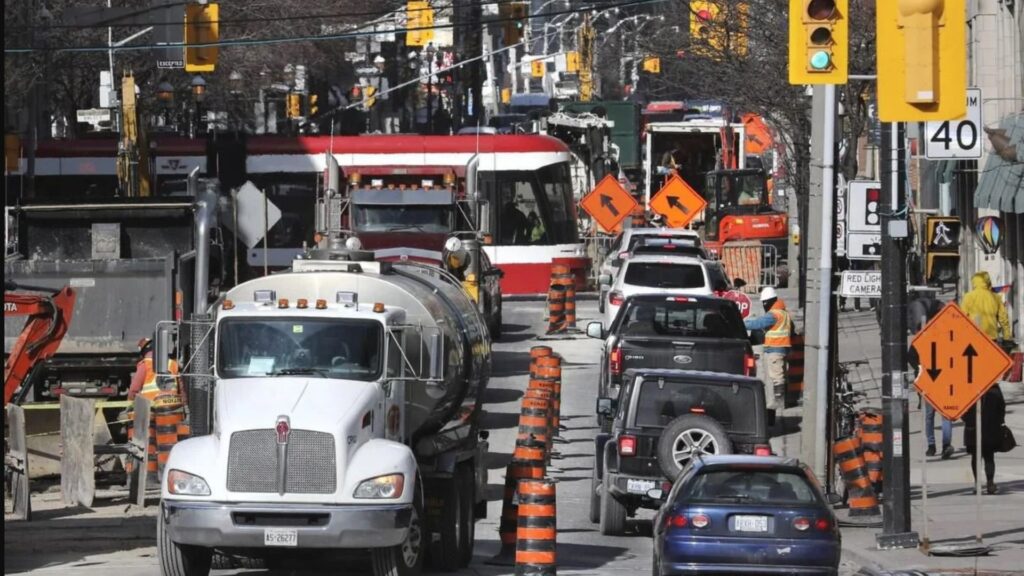Capacity – Impact & Influence
By Quintin Johnstone, Founder & CEO of Samsonshield Inc. / Riskboss Inc.
As described by Wikipedia, “Elephant in the Room” is an American English metaphorical idiom for an obvious problem or risk that no one wants to discuss.” Controversial yes; however, very necessary conversation(s) here at Riskboss Magazine. In every publication, Riskboss Magazine will address the latest Elephant in the Room to clearly answer hard asked questions.
“Capacity.” This is our answer to the question we get most often from property managers, condo Boards and even commercial property owners: “What is the most important thing that will impact high-rise residential and commercial properties in the Greater Toronto Region (GTA) in the coming years?” Capacity to perform is the single largest impact to both residential and commercial properties. How service companies operate can mean the difference between success or failure for your community.
Growth
The GTA is one of the fastest, if not ‘the’ fastest growing metropolitan areas in North America. Immigration is one of the driving factors, with over 80,000 new immigrants coming to the City of Toronto each year. It is projected that the GTA population will increase by 40.09% (2.9 million people) to 10 million people by 2046. All of this means it is highly likely that all residential communities will be impacted by huge increases in density regardless of the location.
What a great time it is for local developers. Toronto monopolizes more construction cranes than anywhere else with 208 (246 including the GTA). This represents 43% of all cranes in the world and is a 68% increase year over year 2021/ 2020. This fact is staggering but true. There are over 2,700 condominium corporations already registered in Toronto and that number is growing. The “2 Kings Policy” (See enclosed 2 Kings article) sparked an unprecedented expansion of the Toronto core that has lasted for decades with no end in sight. This began the sustained growth making Toronto the number one hotspot for condominiums in the world by volume.
Demographic Shifts – The Move to the City Core
Driving much of this unprecedented growth is the demographic shift from the suburbs and townships to the city centres, particularly by the Baby Boomer and Millennial generations. Developers, when choosing where to build, when to build and when not to build, follow demographic trends and not short term economic trends. Both residential and commercial developers tend to follow the workforce, and that workforce is overwhelmingly now in the city cores. With this, large business has also come back to the city cores to follow the workforce. Multi-residential properties are also being reverted on mass back to single-family residential, particularly in the Toronto core due to demographic changes.
So the big question is, why are developers building condominiums rather than apartment buildings? Building condominiums provides developers with options and flexibility to sell units or sell some and keep some to rent out until market conditions are at a premium.
Markets often change quickly and sometimes radically. For example, during the peak of the COVID19 pandemic, downtown Toronto residential vacancy rates quickly rose to 9.0% in Q1, 2021, benefiting tenants. In Q3, 2021, at 3.8%, the tenancy market was more balanced. Anything below 2.0% is considered a landlord’s market as was witnessed pre-COVID19 (2019 Q3 at .08%, Q4
at .09% and Q1, 2020 at 1.0%) when landlords were in charge.
Too Many Condominiums/Not Enough Resources
Never in recent history has there been such a lack of qualified and capable property managers in Ontario. Simply put, there is a war on good talent being waged by competing firms. The law of supply and demand exemplifies this unique period of time where property managers are in such high demand. Property management firms are competing from a small pool of qualified people. Until this management pool increases to make for a more balanced market, condominium Boards should be very conscious of the fact that if you have a great manager, but that manager feels that their efforts are not being appreciated, they have many, many alternatives. When will a more balanced market happen? It won’t happen any time soon, given the impact of extreme condominium growth and the time needed to accredit new property managers to catch up.
Security is generally a recession, and yes COVID19 proof industry. During such times, security is needed more than any other time.
Then why has the COVID19 pandemic environment witnessed 12 to 16 hour shifts, multiple site location placements, and cancelled days off that continues to be the industry norm for front line security employees? It is likely due to some service providers who ignore capacity limits to financially capitalize on the COVID19 crisis. Some security companies are using condominium security guards to augment crowd control work at malls, stores and events during COVID19. This is simply irresponsible and very high risk because that same guard will be back at work in your condominium, having been in contact with hundreds of people outside of your community. Do you see a different face every day in your security staff? If so, this may be why, and to be direct about this, there is absolutely no reason for it other than short sighted gain. Financially great for the security company, but not so good for your community. It is also a high risk to the health and safety of the guards.
The Impact of COVID19

COVID19 pandemic has had one of the most devastating impacts to the world in generations. Pre-Covic19 high-rise resident density routinely subsides during workdays, but with COVID19 restrictions, higher density is the norm at all times of the day. Maximum density at all hours of the day and night stretches resources often far past planned capacity of service providers to perform. The impact of increased costs for maintenance and utilities are significant.
Unheard-of increases in the delivery of parcels have stretched capacity limits in all condominium settings. It is caused by stay-at-home workers and the global move by manufacturers in
selling directly to the consumer. At many sites, security does less preventative work in exchange for parcel management. Riskboss anticipates that post-pandemic norms will include some workers continuing to work from home full-time along with those who choose hybrid working decisions. Parcel management issues will continue as residents have been accustomed to home delivery.
COVID19 has created efficiencies in business processes and the way we operate. Businesses are moving to virtual meetings. Instead of driving through horrific traffic, virtual meetings have alleviated this big problem. Virtual meetings have also alleviated the need for mass in-person gatherings such as AGMs. Working from home has reduced some vehicle gridlock and overcrowding in transit; however, with declining revenues, wait times seemingly get longer and longer. This has also created a huge shortfall causing a 74 million dollar deficit in TTC revenues reported in September 2021.
Infrastructure & Reduced Government Services
Governments at all levels are struggling with deteriorating infrastructure improvements that have been deferred by previous governments for many decades. They are getting an earful from
disgruntled voters. The move to alternative transportation is here to stay, according to Riskboss sources within the Municipal government. Certainly, it is much better for the environment and those advocating for limitations on vehicles in city cores, but clearly it is not so good for some.
The cost of deferred infrastructure improvements is staggering, and this is not a localized problem. According to a 2013 McKinsey & Company report, an estimated $57 trillion in global infrastructure improvements is needed between now and 2030. Toronto has been smart in the growth of building new condominiums as developers have assisted in new infrastructure by transferring costs to these builders. Politicians have even insisted on added value public art created by local artisans. Given the immense growth, delays caused by construction capacity limits is very apparent.
As reported in a previous edition of Riskboss Magazine, police resources have been diminishing in the GTA for many years. What used to be routine policing matters (e.g. noise complaints) are no longer a police responsibility due to cutbacks and capacity shortfalls. Many routine matters have been transferred to other City resources that are also already taxed to the limit.
In 2018 during the municipal election campaign, the provincial government reduced the number of Toronto city councillors from 47 to 25 aligning ridings with federal counterparts. With massive annual increases in population, Toronto residents appear to be faced with getting by with less government assistance where the new normal is, “Do more with less.” Legal and paralegal firms are filling voids offering their services previously offered by the government but at a cost.
Increased Tenancies in Condominiums
The impact of increased tenancies in residential condominiums is significant. Unlike the mid to late 1980s when speculators bought multiple units with virtually nothing down only to be shocked by the 1989(90) recession, the current condominium boom has been sustained in the GTA since the mid-1990s with no end in sight. This condominium boom has been sustained by the lack of residential apartments being built by developers in Ontario for many decades.
With the lack of residential apartments being built, condominiums have become a natural replacement and destination for renters.
Condominiums have also taken over from traditional basement apartments that were a fixture in the GTA landscape up until the mid- 1990s.
With high tenancies in residential condominiums comes many challenges for Boards and property managers. Riskboss wrote extensively about tenant issues in our last edition and the problems that condominium Boards and property managers face. Please have a read as it will assist in understanding and mitigating such risks.
Traffic Nightmares

Traffic congestion is a fact of life in Toronto. Twenty years ago and prior, there was one rush hour coming into Toronto each weekday morning and one outgoing in the afternoon. The 2000s brought with it, two-way rush hours in Toronto that extend well into the late morning and evening.
Do our roads have the capacity for such growth? Is the government going to increase roadway capacity? Riskboss sources advise that the City has no plans to increase Toronto roads or highways by widening or increasing traffic lanes. The reason is that, similar to what occurred in Detroit and Washington, DC; this would eventually leave the city core desolate after business hours. People are more likely to live in the suburbs than in urban centres if travel in and out of the city cores by car is fast and easy. Candidly, some Toronto politicians quip that they don’t want their tax base to leave for the suburbs every night.
Traffic congestion is neither a new issue nor a downtown issue. In 2010, a study was conducted by the City of Toronto on traffic volumes at the Yonge Street and Sheppard Avenue intersection. The study revealed that within an eight-hour time frame, 6,465 pedestrians and 40,431 vehicles were reported at this intersection, making this intersection of one the busiest in the City. In January 2016, Mayor John Tory reported that this intersection was one of the two worst intersections in the City for congestion.
Things are definitely different and will continue to change. Communities will be forced to look to localized private problem-solving tools and be less reliant on the government.
Toronto City Council has measures in place such as the Traffic Gridlock Reduction Campaigns supported by the unprecedented growth of public transit infrastructure. The overall plan is to increase transit that will leave Toronto like other major cities around the world when it comes to traffic congestion. Bicycles lanes are also being created everywhere in Toronto, further reducing vehicular lanes. Ask any business owner along King Street in downtown Toronto or delivery driver what they think of the prohibition of vehicular traffic and parking, and you will definitely get very strong opposing opinions.
Next Steps?
After the COVID19 cloud clears and all the dust settles, there will be a new normal. Capacity must be planned for well in advance and managed appropriately in condominium settings to ensure a high degree of operational resilience and readiness to any and all risks. Being prepared to deal with matters using robust in-house processes and procedures in keeping with local laws and the Condominium Act is a sure pathway for success.
We always ask property owners and condominium Boards, “How do you know what success looks like, and how will you know when you get there?” All outsourced service providers should be fully engaged with standards that are clearly identifiable and measurable by using prescribed Key Performance Indicators (KPIs). It is our belief that what doesn’t get measured often doesn’t get done. Service providers must be forced to honour all agreements with clients and commitments to support our front-line staff like no other time in history. This includes keeping within capacity limits.
Combining resources with other condominium communities close by ensures better risk resilience to localized problems. Pooling resources and coordinating requests to local government is always better done as a group.
During this time when there are too many condominiums and not enough resources, one of the most important questions Boards should ask service providers during procurement is, “How do you manage your capacity?”
